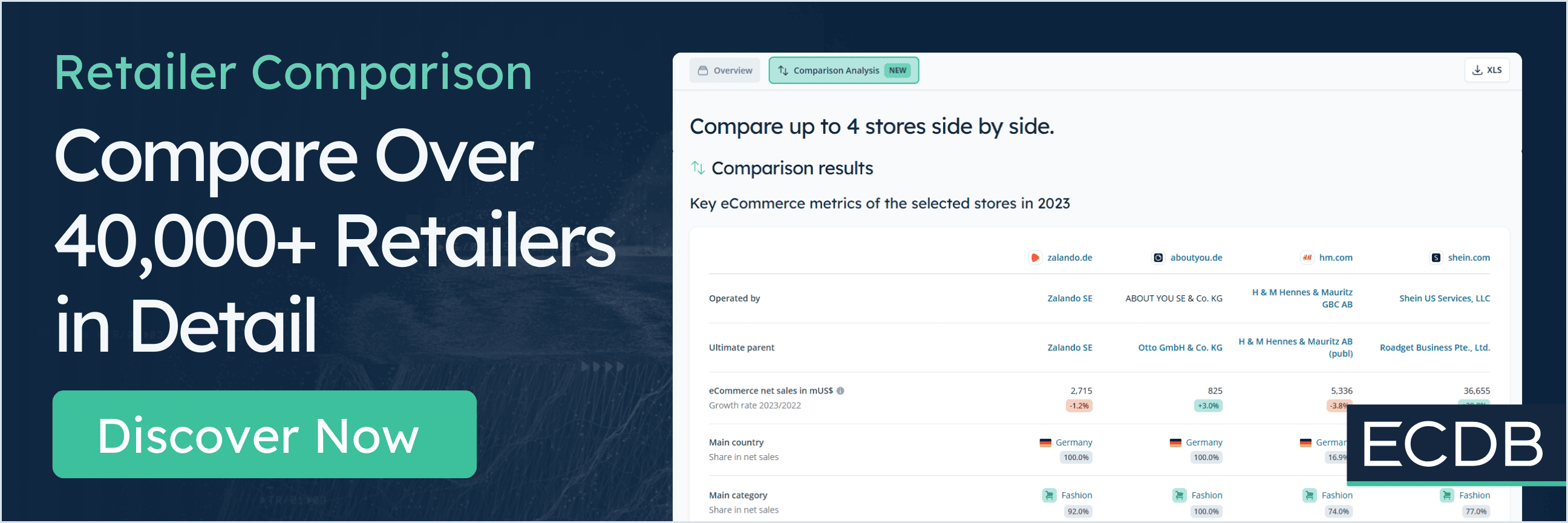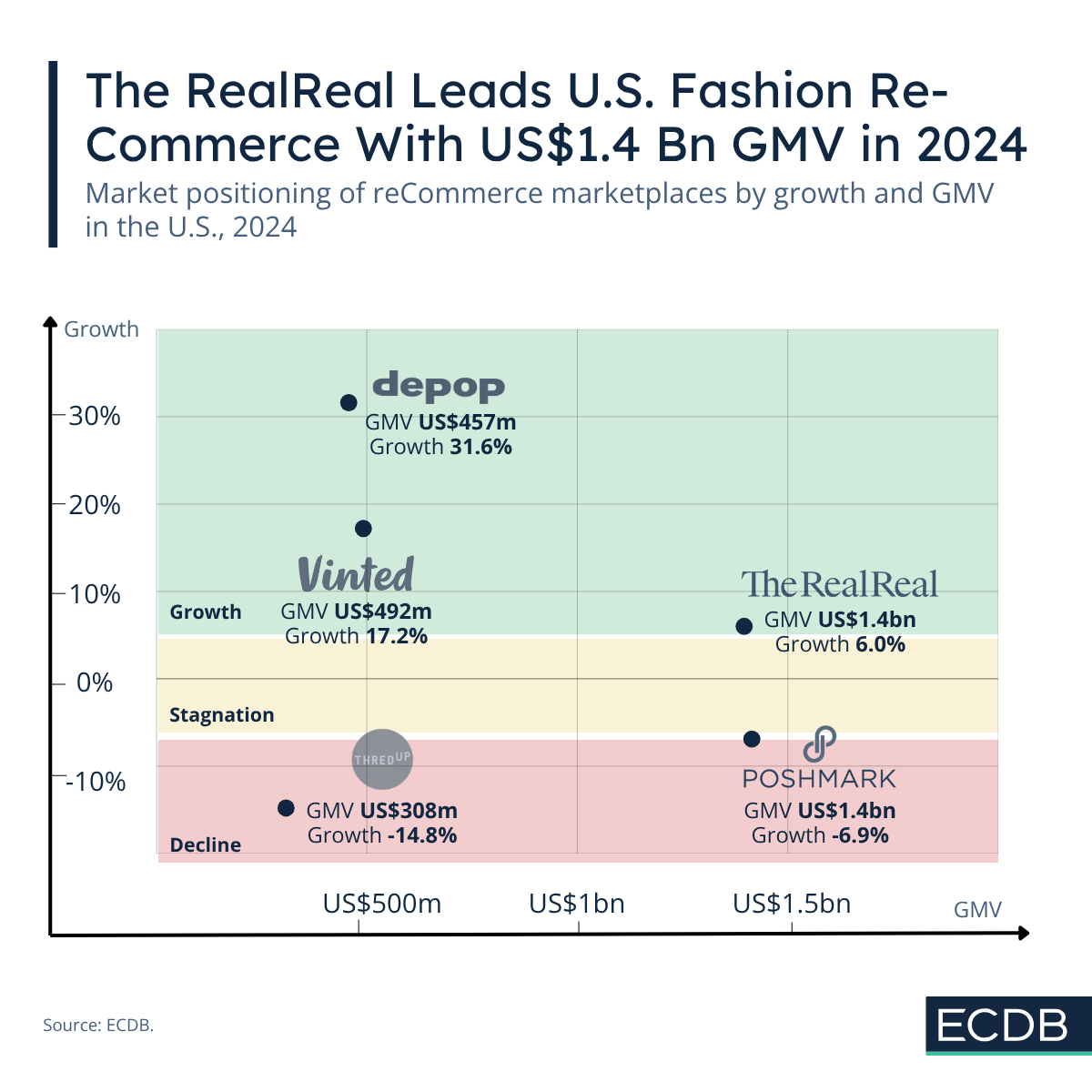ReCommerce fashion has been a major topic of discussion for quite some time. Secondhand fashion is gaining popularity online as shoppers look to save money and reduce their environmental impact.
In the United States, fashion accounts for 21.9% of eCommerce revenues. The online marketplace ranking features all kinds of players, with most of the top-ranking ones employing a low-price strategy.
Five reCommerce platforms are among the top 20 fashion eCommerce marketplaces, performing at different levels. We categorized them according to their 2024 gross merchandise volume (GMV) and growth.
Fast Movers: Depop and Vinted Are on the Rise
In the upper left-hand corner of the GMV, below US$1 billion and high growth are two growing platforms with an interactive user concept. Both Depop and Vinted are known for enabling a quick selling process, user reviews, and the ability to follow members and exchange messages.
Depop is operated by Etsy, and has been on an upward trend since post-pandemic declines led to GMV losses in 2022 and 2023. In 2024, Depop generated US$457 million in the United States, marking a 31.6% growth rate since 2023.
Vinted is being widely talked about, as it is one of the globally rising reCommerce platforms right now. Vinted’s performance in the United States is not as notable as it is in Europe, but the platform is nonetheless among the top 20 marketplaces in U.S. eCommerce. It generated US$492 million in GMV and rose by 17.2%.
The RealReal Grows Where Poshmark Shrinks in the U.S.
The RealReal ranks 12th among U.S. fashion marketplaces, just a few million GMV behind Poshmark in 11th place. The RealReal is categorized more favorably than Poshmark because it is on a stable trend, whereas Poshmark is seeing declines.
Both platforms allow consumers to buy and sell luxury fashion, a business concept that has come under scrutiny in the past few years. A global perspective in the article criticizing the concept of luxury eCommerce meets a U.S.-based perspective here. Both The RealReal and Poshmark offer authenticated luxury items at a fraction of the original price.
While Poshmark has struggled with a murky outlook and an acquisition by the South Korean eCommerce platform Naver, The RealReal is expected to see small but steady increases at consistent platform tweaks to enhance the user experience.
ThredUp Falls Off the Top 20 U.S. Marketplace Ranking
ThredUP has changed its revenue model over the past decade, shifting from a focus on first-party net sales to third-party gross merchandise value (GMV). This means that, whereas brands and consumers previously sent their used goods to ThredUp to resell, the platform now primarily facilitates the exchange of items between consumers.
From a 1P activity of 33.6% in 2018, ThredUp hosts 97.4% of 3P activity in 2024. ThredUp’s revenue peaked in 2023, but saw a decline of -14.8% again in the following year. The problems with ThredUp are mostly due to the increasing popularity of reCommerce marketplaces and the resulting intensifying competition.
According to user feedback, buying on ThredUp is more worthwhile than selling because other platforms often generate higher returns for sellers. This is a logical consequence of an emerging trend: With more resale options available, consumers have greater freedom to choose where to buy and sell, which wasn't possible when fewer platforms existed.










